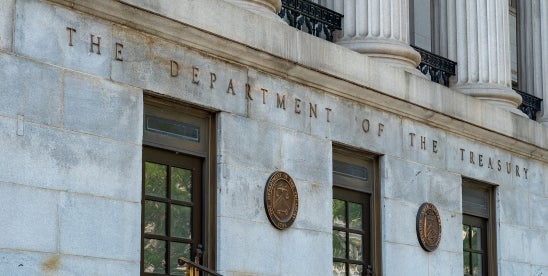A recent cybersecurity breach at the U.S. Department of Treasury, attributed to a China state-sponsored hacker, has intensified concerns over the security implications of the Corporate Transparency Act. As legal battles continue over the Act’s enforcement, questions arise about safeguarding sensitive business data from potential threats.
Department Of Treasury Letter Evidences CTA Privacy Threat

Key Takeaways:
- The Fifth Circuit Court of Appeals reinstated a nationwide injunction against the Corporate Transparency Act’s reporting requirements.
- A major cybersecurity incident at the Treasury Department was disclosed, involving a China state-sponsored hacker.
- The breach has heightened concerns about the security risks of centralizing sensitive data under the CTA.
- Hackers accessed Treasury workstations and unclassified documents by exploiting a stolen key from a third-party vendor.
- The incident emphasizes the potential vulnerability of housing personal information of millions of businesses.
Treasury Cyberattack Raises Alarms Over Corporate Transparency Act Security
A significant cybersecurity incident at the U.S. Department of Treasury has sparked renewed concerns over the security implications of the Corporate Transparency Act (CTA). The breach, attributed to a China state-sponsored Advanced Persistent Threat (APT) actor, comes at a critical time as legal debates continue over the enforcement of the CTA’s reporting requirements.
Details of the Cybersecurity Incident
On December 8, 2024, the Treasury Department was alerted by BeyondTrust, a third-party software service provider, that a threat actor had gained access to a key used to secure a cloud-based service. This service is employed to remotely provide technical support for Treasury Departmental Offices (DO) end users. With this stolen key, the hacker was able to override security measures, remotely access certain Treasury DO user workstations, and obtain unclassified documents maintained by those users.
According to a letter from Aditi Hardikar, Assistant Secretary for Management at the U.S. Department of Treasury, the event was a “major cybersecurity incident.” The attribution to a China state-sponsored APT actor underscores the sophisticated nature of the attack and raises serious concerns about the security of federal systems.
Implications for the Corporate Transparency Act
The timing of this breach is particularly noteworthy given the recent legal developments surrounding the CTA. The Fifth Circuit Court of Appeals has reinstated a nationwide injunction against enforcement of the Act’s Beneficial Ownership Information reporting requirements. While this pause offers a temporary respite from the CTA’s obligations, the constitutionality and future implementation of the Act remain uncertain.
Critics have long cautioned that the CTA could create a lucrative target for cybercriminals and foreign adversaries. The Act mandates the Treasury Department to collect and store personal information of the beneficial owners of tens of millions of businesses. This centralization of sensitive data could be, as some suggest, a “rich, centralized target for criminals and foreign governments.”
Vulnerabilities Exposed
The recent cyberattack exemplifies the potential risks of housing vast amounts of sensitive information. By exploiting a single stolen key from a third-party vendor, attackers were able to infiltrate the Treasury’s systems. “With access to the stolen key, the threat actor was able to override the service’s security,” notes the original report, highlighting how peripheral vulnerabilities can have significant consequences.
A Call for Vigilance
The incident amplifies existing concerns about the CTA’s security implications. If enacted without robust safeguards, the Act could inadvertently expose critical personal and corporate information to malicious actors. The question posed by skeptics remains pressing: “Does anyone doubt that this will be an inviting target for hackers and that attacks on the security of that central depository are inevitable?”
Moving Forward
As the legal battle over the CTA unfolds, the Treasury Department’s experience serves as a stark reminder of the ever-present cyber threats facing governmental agencies. Ensuring the security of sensitive data is paramount, and this incident may prompt a reevaluation of how such information is collected and protected.
Conclusion
The Treasury’s cybersecurity breach not only exposes vulnerabilities within federal systems but also underscores the potential risks associated with the Corporate Transparency Act. Balancing transparency with security is a delicate task, and as cyber threats evolve, so too must the strategies to safeguard against them. The future of the CTA hinges not just on legal rulings but also on the ability to assure all stakeholders that their information will remain secure.











